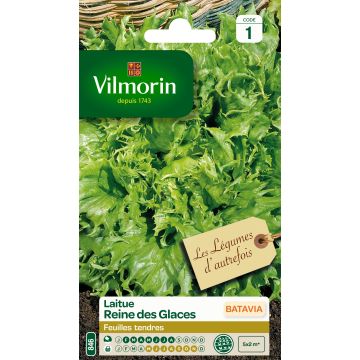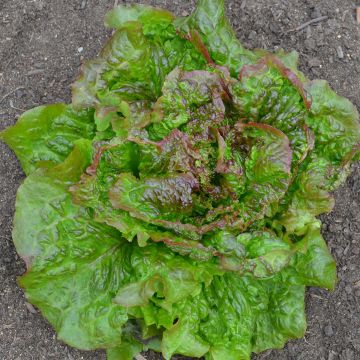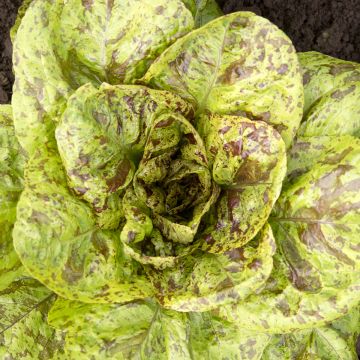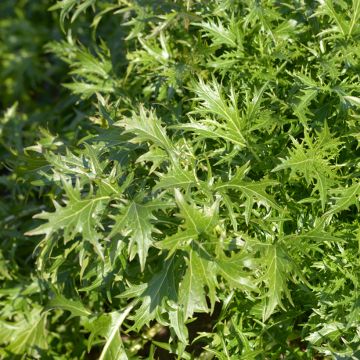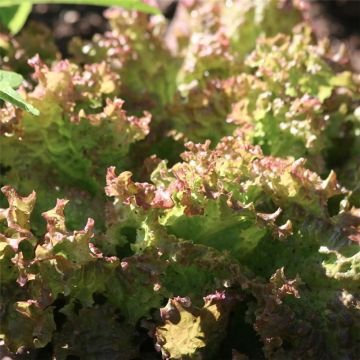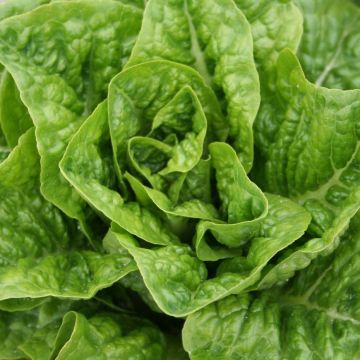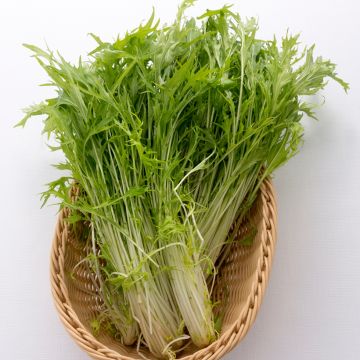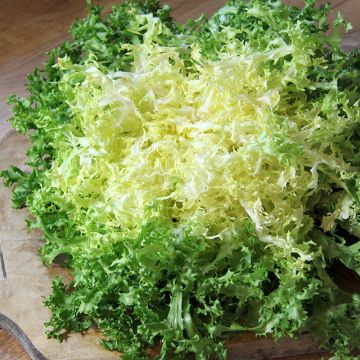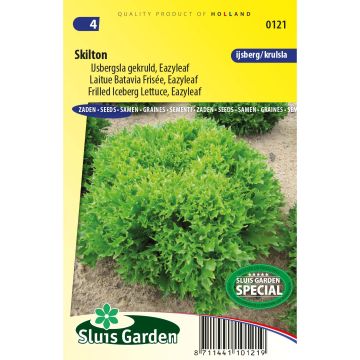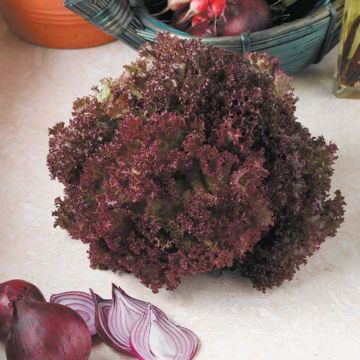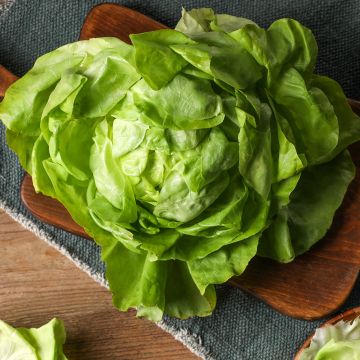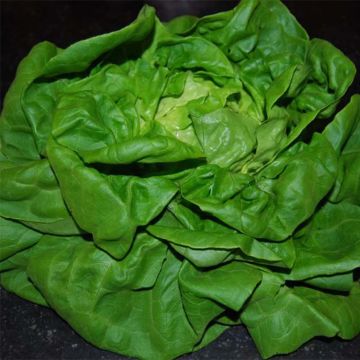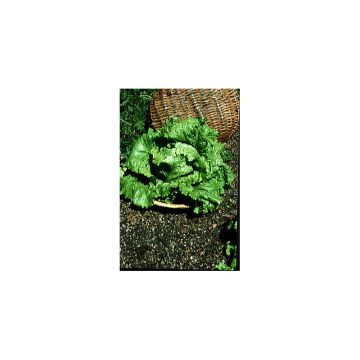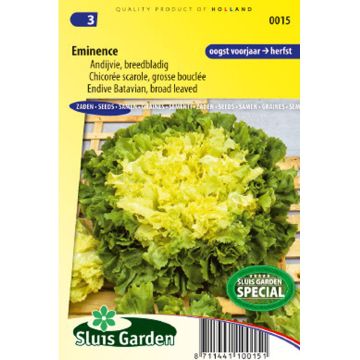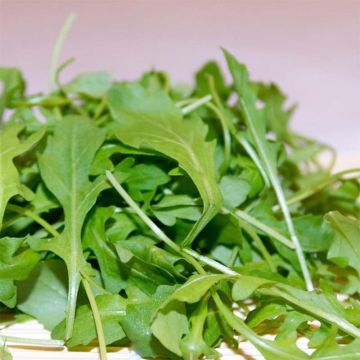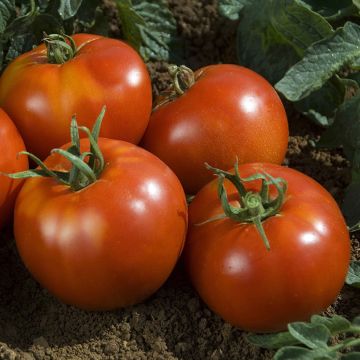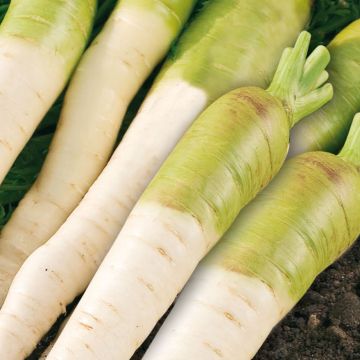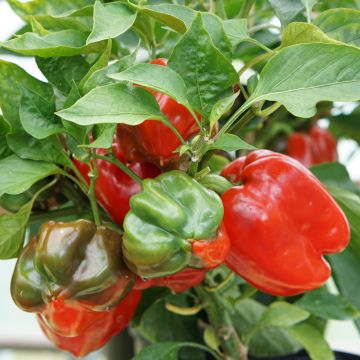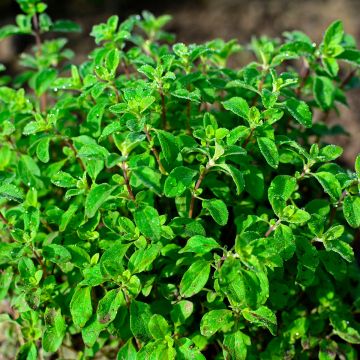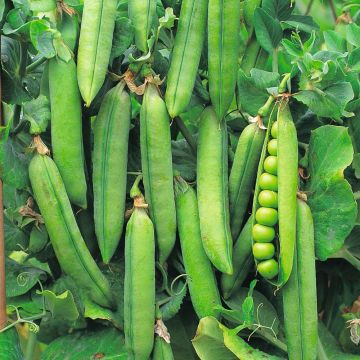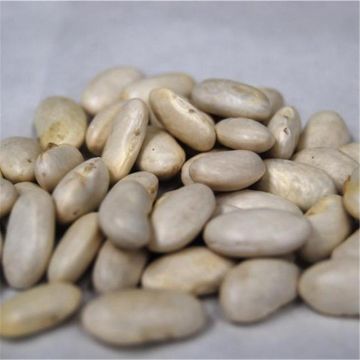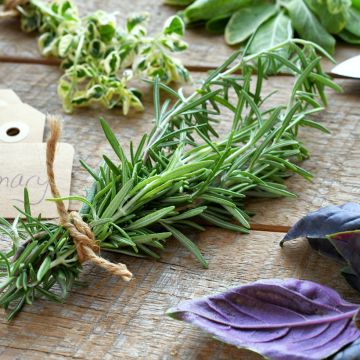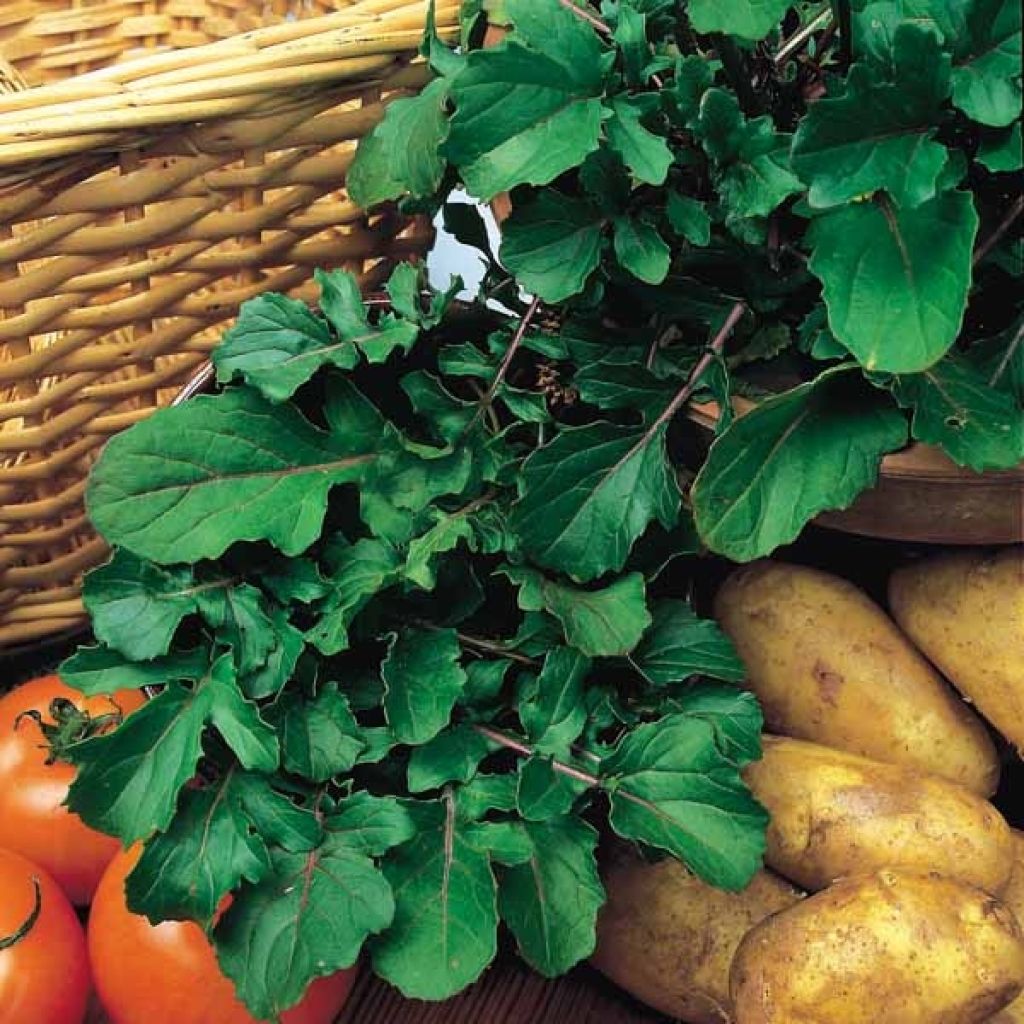

Roquette
Garden Rocket seeds - Eruca sativa
Eruca sativa
Rocket, Arugula, Jamba, Salad rocket, Edible rocket, Roquette, Rucola
Special offer!
Receive a €20 voucher for any order over €90 (excluding delivery costs, credit notes, and plastic-free options)!
1- Add your favorite plants to your cart.
2- Once you have reached €90, confirm your order (you can even choose the delivery date!).
3- As soon as your order is shipped, you will receive an email containing your voucher code, valid for 3 months (90 days).
Your voucher is unique and can only be used once, for any order with a minimum value of €20, excluding delivery costs.
Can be combined with other current offers, non-divisible and non-refundable.
Why not try an alternative variety in stock?
View all →This plant carries a 6 months recovery warranty
More information
We guarantee the quality of our plants for a full growing cycle, and will replace at our expense any plant that fails to recover under normal climatic and planting conditions.
Description
The Garden Rocket is a vegetable plant with highly appreciated seasoning foliage by gastronomes for its taste and texture. Thanks to its ability to regrow quickly, this hardy salad, which is cut back as soon as the foliage reaches 15 to 20 cm (6 to 8in) in height, offers numerous successive harvests. By staggering the sowing periods, rocket can be produced all year round if protected from the cold. Sow outdoors from March to May for harvests from May to September. Sow outdoors in August-September for winter harvests. Sow from October to March, under glass or in a cold frame, for harvests from March to June.
The Garden Rocket, formerly known as "éruce" in Latin Eruca sativa, is an annual plant that belongs to the Brassicaceae family, formerly Cruciferae. It produces long, narrow, oblong, slightly thick, dark green leaves with a pungent and peppery flavor. Pale yellow flowers veined with violet appear at the end of upright stems.
The Garden Rocket is not demanding, it ideally grows in humus-rich, moist and well-drained soil, but also grows well in ordinary soils.
In the kitchen: Garden rocket is appreciated for its unique taste, which varies depending on its cultivation method and the age of its leaves. When they are young, they have a nutty flavor, and when they are older, they have a hint of bitterness. In any case, rocket adds flavor to salads, raw vegetables, sandwiches, carpaccios... It easily blends in with "mesclun", a salad mix composed of lettuce, lamb's lettuce, chicory, oak leaf... It enhances pizzas, accompanies pasta dishes, or fills quiches, savory tarts, lasagnas, and gratins. It is a great addition to soups, creamy soups, or pesto. It is used in cuisines from around the world, such as Portugal, where it is served cooked with fish or meat, or in Turkey as a side dish for bulgur, or in Egypt as an accompaniment to fava bean stews. With its flavors, rocket pairs well with goat cheese or gorgonzola, tomatoes, dry-cured ham, or walnut oil.
Benefits of rocket: Refreshing and invigorating, this leafy vegetable has digestive and antioxidant properties. It is rich in fiber, carotenoids, vitamins A, B, and C, and provides potassium.
Harvest: It is recommended to sow at several periods to obtain beautiful harvests throughout the year. Depending on the period and location, the first harvests occur 6 to 8 weeks after sowing. The leaves are simply cut close to the ground, according to needs. This close cut stimulates the production of new leaves that will be available again for the next harvest and so on, until the appearance of flowering stems.
Storage: Rocket leaves can be kept in the refrigerator for a few days. To fully enjoy its aroma, we recommend consuming it freshly picked.
Gardener's tip: Flea beetles, tiny beetles, are fond of rocket leaves and meticulously puncture them in dry and hot weather. While spraying tansy infusion can limit the damage, installing insect-proof netting from sowing is the most effective method of control while avoiding the use of insecticides, which, even if of natural origin, have consequences on the garden's balance.
Report an error about the product description
Harvest
Plant habit
Foliage
Botanical data
Eruca
sativa
Brassicaceae
Rocket, Arugula, Jamba, Salad rocket, Edible rocket, Roquette, Rucola
Southern Europe
Annual
Other Salad leaf seeds
View all →Planting and care
Cultivation: Rocket thrives in full sun in early summer or partial shade in mid-summer, especially in very hot regions. Ideally, it prefers a humus-rich, moist, well-drained and well-worked soil. If compost is needed, it should be applied preferably in autumn, in the form of well-rotted compost, dug in to a depth of 5 cm (2in), after loosening the soil as you would for any vegetable cultivation.
Sowing: Rocket has a germination temperature of around 12°C (53.6°F) and takes about 15 days. It can be sown under cover (cold greenhouse or frame) or outdoors without protection. Rocket is quite tolerant of cold and winter (hardy down to -12°C (10.4°F)). For regions with harsher winters, protect the plants with a frame or winter cover.
Sow from March to May in open ground for harvests from May to September.
Sow in open ground in August-September for winter harvest. In this case, the winter foliage is slightly tougher, making it more pungent and spicy.
Winter sowing, in a greenhouse or frame, from October to March: harvest from March to June.
In properly amended and loosened soil , sow the seeds at a depth of 1 to 2 centimetres (0 to 1 inches), with rows spaced 30 to 40 cm (12 to 16in) apart. Cover the sowing with a thin layer of soil and lightly press down. You can thin out dense sowings, leaving one plant every 10 cm (4in) or so. In spring and summer, it takes about 40 to 60 days between sowing and the first harvest.
Cultivation in a pot or planter is possible, in which case regular watering is necessary until harvest.
Maintenance: Rocket tends to bolt quite easily (except for some particularly resistant varieties), so regular watering with fine rain and mulching the soil to maintain good moisture is recommended. It is also advisable to stagger sowings to extend the harvesting period.
Seedlings
Care
Intended location
This item has not been reviewed yet - be the first to leave a review about it.
Similar products
Haven't found what you were looking for?
Hardiness is the lowest winter temperature a plant can endure without suffering serious damage or even dying. However, hardiness is affected by location (a sheltered area, such as a patio), protection (winter cover) and soil type (hardiness is improved by well-drained soil).

Photo Sharing Terms & Conditions
In order to encourage gardeners to interact and share their experiences, Promesse de fleurs offers various media enabling content to be uploaded onto its Site - in particular via the ‘Photo sharing’ module.
The User agrees to refrain from:
- Posting any content that is illegal, prejudicial, insulting, racist, inciteful to hatred, revisionist, contrary to public decency, that infringes on privacy or on the privacy rights of third parties, in particular the publicity rights of persons and goods, intellectual property rights, or the right to privacy.
- Submitting content on behalf of a third party;
- Impersonate the identity of a third party and/or publish any personal information about a third party;
In general, the User undertakes to refrain from any unethical behaviour.
All Content (in particular text, comments, files, images, photos, videos, creative works, etc.), which may be subject to property or intellectual property rights, image or other private rights, shall remain the property of the User, subject to the limited rights granted by the terms of the licence granted by Promesse de fleurs as stated below. Users are at liberty to publish or not to publish such Content on the Site, notably via the ‘Photo Sharing’ facility, and accept that this Content shall be made public and freely accessible, notably on the Internet.
Users further acknowledge, undertake to have ,and guarantee that they hold all necessary rights and permissions to publish such material on the Site, in particular with regard to the legislation in force pertaining to any privacy, property, intellectual property, image, or contractual rights, or rights of any other nature. By publishing such Content on the Site, Users acknowledge accepting full liability as publishers of the Content within the meaning of the law, and grant Promesse de fleurs, free of charge, an inclusive, worldwide licence for the said Content for the entire duration of its publication, including all reproduction, representation, up/downloading, displaying, performing, transmission, and storage rights.
Users also grant permission for their name to be linked to the Content and accept that this link may not always be made available.
By engaging in posting material, Users consent to their Content becoming automatically accessible on the Internet, in particular on other sites and/or blogs and/or web pages of the Promesse de fleurs site, including in particular social pages and the Promesse de fleurs catalogue.
Users may secure the removal of entrusted content free of charge by issuing a simple request via our contact form.
The flowering period indicated on our website applies to countries and regions located in USDA zone 8 (France, the United Kingdom, Ireland, the Netherlands, etc.)
It will vary according to where you live:
- In zones 9 to 10 (Italy, Spain, Greece, etc.), flowering will occur about 2 to 4 weeks earlier.
- In zones 6 to 7 (Germany, Poland, Slovenia, and lower mountainous regions), flowering will be delayed by 2 to 3 weeks.
- In zone 5 (Central Europe, Scandinavia), blooming will be delayed by 3 to 5 weeks.
In temperate climates, pruning of spring-flowering shrubs (forsythia, spireas, etc.) should be done just after flowering.
Pruning of summer-flowering shrubs (Indian Lilac, Perovskia, etc.) can be done in winter or spring.
In cold regions as well as with frost-sensitive plants, avoid pruning too early when severe frosts may still occur.
The planting period indicated on our website applies to countries and regions located in USDA zone 8 (France, United Kingdom, Ireland, Netherlands).
It will vary according to where you live:
- In Mediterranean zones (Marseille, Madrid, Milan, etc.), autumn and winter are the best planting periods.
- In continental zones (Strasbourg, Munich, Vienna, etc.), delay planting by 2 to 3 weeks in spring and bring it forward by 2 to 4 weeks in autumn.
- In mountainous regions (the Alps, Pyrenees, Carpathians, etc.), it is best to plant in late spring (May-June) or late summer (August-September).
The harvesting period indicated on our website applies to countries and regions in USDA zone 8 (France, England, Ireland, the Netherlands).
In colder areas (Scandinavia, Poland, Austria...) fruit and vegetable harvests are likely to be delayed by 3-4 weeks.
In warmer areas (Italy, Spain, Greece, etc.), harvesting will probably take place earlier, depending on weather conditions.
The sowing periods indicated on our website apply to countries and regions within USDA Zone 8 (France, UK, Ireland, Netherlands).
In colder areas (Scandinavia, Poland, Austria...), delay any outdoor sowing by 3-4 weeks, or sow under glass.
In warmer climes (Italy, Spain, Greece, etc.), bring outdoor sowing forward by a few weeks.































